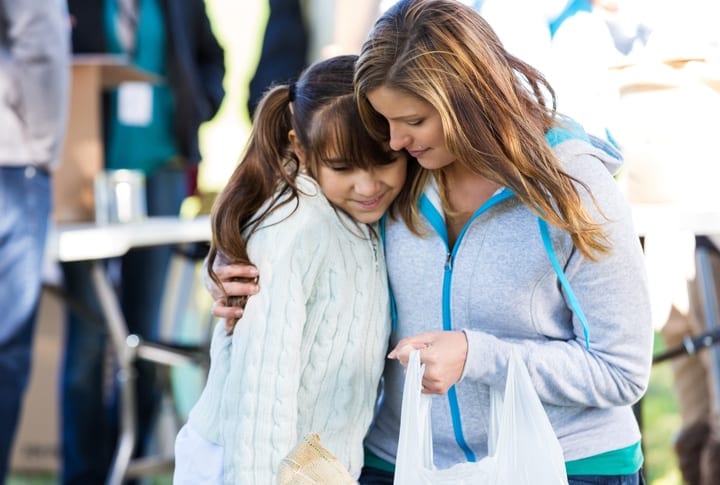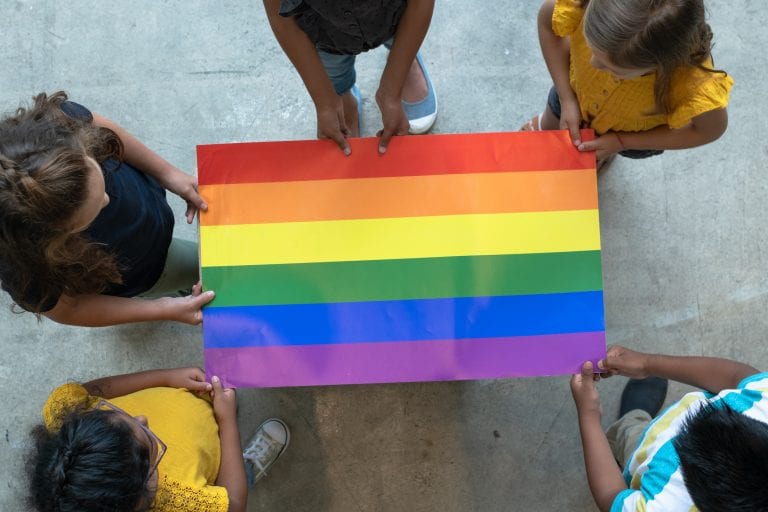A student is considered vulnerable if one part of their development is not growing at an average rate. What happens if all parts of a child’s development are not growing? These are our most vulnerable students. Many of them are growing up in poverty, facing additional challenges that can make learning extra challenging. Here are some important ways we can support our vulnerable students and improve their school experience.
1. Start a free clothing closet
Kids don’t want to come to school wearing the same clothes every day, but sometimes they have no choice. “Plainwell High School teacher Nancy Heath noticed a need in her school a few months ago. “I just looked around the school and there are kids that just don’t have adequate clothing. They’re wearing the same thing day in and day out, they’re dirty, you know they probably don’t have access to a washer/dryer and they don’t ask, they don’t complain they just come to school and do their best. So I thought why not help?”
2. Give out weekend food backpacks
Some children living in poverty don’t have access to adequate nutrition unless they are at school. That can make going home for weekends and vacations stressful. Many schools have programs like Feed More where kids get the food they need.
3. Provide free access to sanitary supplies
Studies suggest that the more stressful a child’s life is early on, the earlier the onset of puberty. Many nonprofits and other services neglect to give young girls free access to menstruation products. There are some places out there making sure girls and women from low-income communities have free access, like Helping Women Period.
4. Have a bank of school supplies available for anyone
Some kids who show up to school without supplies aren’t being irresponsible, they simply can’t bring a pencil to school. Have a place everyone can go to for supplies without being ostracized or made to feel uncomfortable.
5. Help them find safe transportation
Many students rely on free bus programs to get to school during regular hours. After hours programs—such as school plays, extracurricularr activities, and even dances—enhance students’ school experiences but also require transportation. Not every child has access to a vehicle or the money to ride public transportation. See if you can use donorschoose.org or ask your local PTO to fund vans for events, gas cards, and bus passes. Make sure everyone knows they are available without having to prove that they need them.
6. Keep your school libraries
Reading not only increases academic intelligence, reading fiction helps build emotional intelligence skills such as empathy. But not every child has access to literature at home. Combine smart, well-read librarians with vast quantities of (free access) books, you create the best learning experience for children. Teachers cannot possibly be expected to manage all of their teaching and be librarians. They lose more books out of their classrooms when there is no true library check out system. Don’t let your community be a book desert.
7. Build and maintain a long-term mentoring program
Studies show that students with social support are more likely to remain engaged in school even when faced with adversity. Long-term mentorship programs can help provide that support. If your school doesn’t have the infrastructure to create a mentorship program on your own, look for one that can help, like Fr1ends of Ch1ldren.
8. Install a washer and dryer
Sullivan Middle School in Worcester, Massachusetts, purchased a washer and dryer with a grant to help kids who may not have easy access to cleaning clothes at home. “It’s a practical solution to a practical problem,” Principal Josephine Robertson told the Worcester Telegram, “We talk about school as having two prongs—there’s the academic side, and the social side. And one cannot be more important than the other.” When disadvantaged students don’t have fresh clothes to wear, they may feel less comfortable going to school and be more prone to chronic absenteeism. After the success of this pilot program, the Worcester School District now plans to install washers and dryers in all the district’s schools.
9. Brainstorm as a staff
It takes a community to support any child, and this is particularly true for vulnerable students. Make sure your school nurse, guidance counselor, physical therapist, and school psychologist are working together to look at every aspect of supporting vulnerable students. This can help bring services to the child while we have him right there in school.
Join our Facebook group Principal Life for more ideas on how to transform your school.

